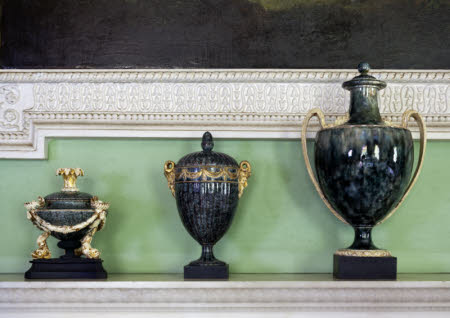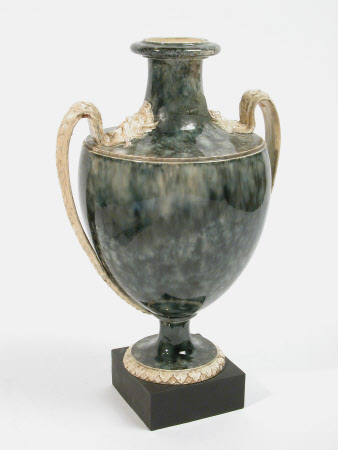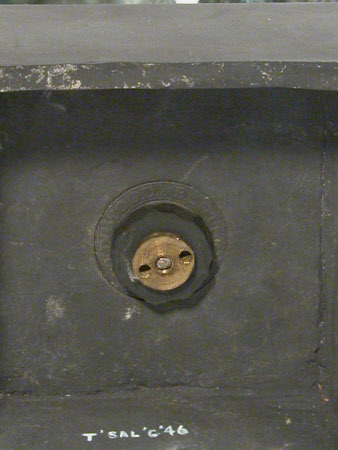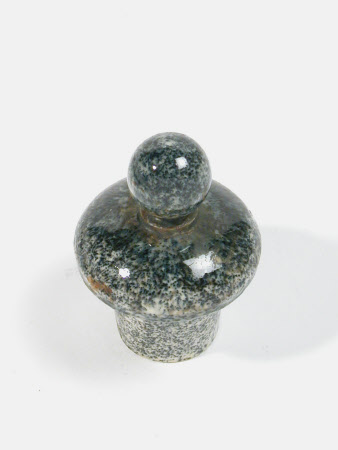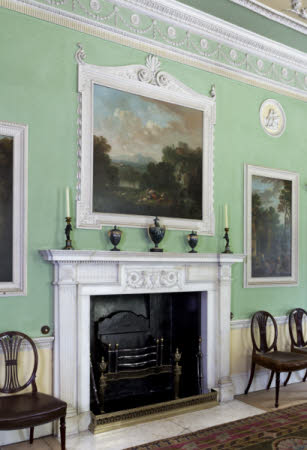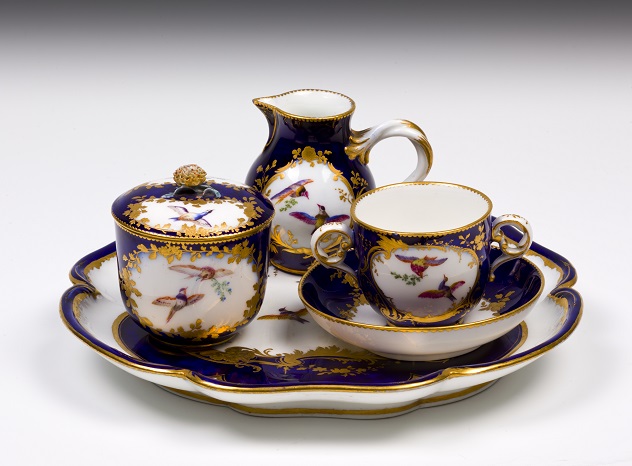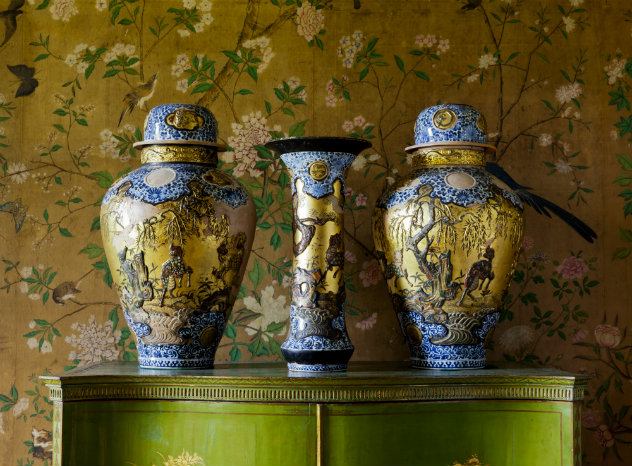Vase and cover
Wedgwood & Bentley
Category
Ceramics
Date
1772 - 1775
Materials
white stoneware (‘terracotta’), underglaze cobalt blue, iron and manganese oxides, gold; black basalt; brass
Measurements
330 mm (Height); 70 mm (Diameter); 50 mm (Diameter)
Place of origin
Etruria
Order this imageCollection
Saltram, Devon
NT 870800
Summary
Vase and cover, white stoneware (‘terracotta’), a variant of Wedgwood's 'Shape no. 1', black basalt, oviform body on cylindrical stem, spreading foot on a square plinth, two strap handles joined from the lower neck, across the shoulder and to lower body, distinct shoulder, long neck and flared rim, slightly domed cover with large globular knop, Wedgwood and Bentley, Etruria, Staffordshire, 1772-5; decorated in imitation of natural stone with cobalt blue, manganese and iron oxides under the glaze, a band at the foot and the handles in the white with acanthus leaf mouldings, traces of cold gilding to the handles and foot. One of a partial ‘Pebble’ garniture of four pieces, made at the Wedgwood and Bentley manufactory, Etruria, Staffordshire, England, in about 1772–5.
Makers and roles
Wedgwood & Bentley, manufacturer
References
Ferguson 2016: Patricia F. Ferguson, Ceramics: 400 Years of British Collecting in 100 Masterpieces, Philip Wilson Publishers, 2016, 136-7
